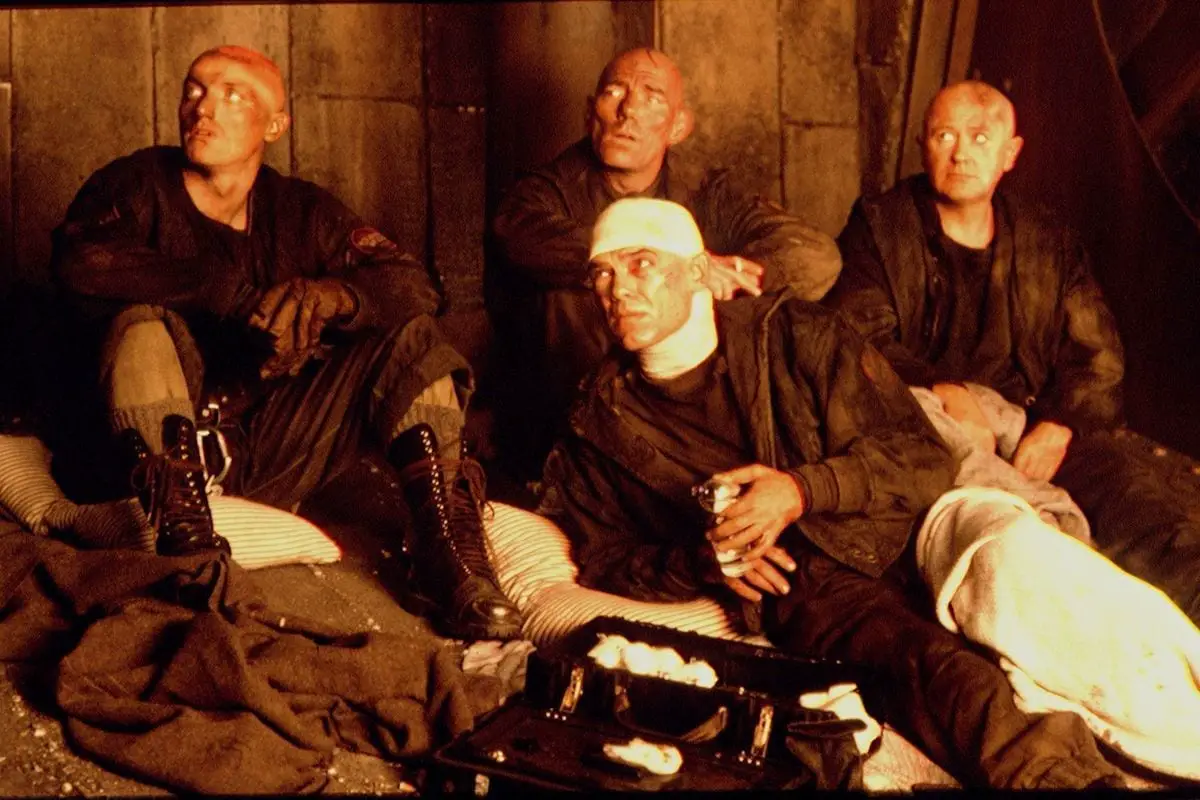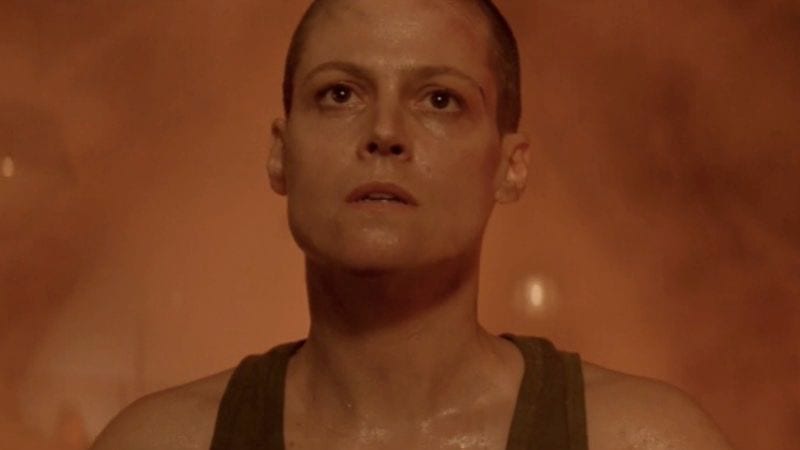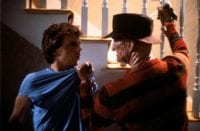Alien 3 (1992) should have been the epic conclusion to what would be the greatest trilogy in sci-fi/horror history. Ridley Scott’s original Alien (1979) had captivated audiences worldwide and reinvented what horror and science fiction together could look like. Dan O’ Bannon (The Return of the Living Dead)’s screenplay introduced two of the most memorable characters in cinematic history: the xenomorph, a ruthless alien killing machine designed by Swiss artist H. R. Giger, and Lieutenant Ellen Ripley, a tough-as-nails flight officer. Played brilliantly by Sigourney Weaver over the course of three films, Ripley becomes the ultimate survivor without ever feeling inhuman or some kind of Mary Sue.
James Cameron took the concept of Alien out of the darkness and into full-blown sci-fi action territory with his follow-up, Aliens (1986). Stan Winston’s creature effects on the new xenomorphs (especially the Queen) mixed with non-stop action made the sequel an instant classic. The stage was set for Alien 3 to deliver the final chapter in a story that had thus far been nothing short of cinematic perfection. So what went wrong?
The behind-the-scenes problems on the production of Alien 3 could warrant their own series of articles to properly cover from inception in 1987 to the release of Alien 3: Assembly Cut in 2003. Instead, let’s look at that Assembly Cut, as it is the closest thing to director David Fincher (Fight Club, Zodiac)’s vision that may ever be seen. Not the famed director of today, in 1992 David Fincher was a young first-time feature director that had just cut his teeth directing music videos. He walked on to a production that had already fired one director (Vincent Ward) and had gone through at least three screenplays. 20th Century Fox had already spent $7 mil of the film’s budget and there was no finished script of the latest iteration. Throughout the making of the film, Fincher experienced constant intervention from Fox. Fincher, in the end, disavowed the theatrical cut altogether for not reflecting his vision. After seeing what was removed in Alien 3: Assembly Cut, the man has more than a point.
Now, it is not a different film than the theatrical release of Alien 3 in that the overall narrative is different or the end result takes you to a different conclusion. What the Assembly Cut does do is tell the story of Alien 3 better. This doesn’t fix all of the problems many returning audiences from Aliens had with the sequel. Many die-hard sci-fi fans will always want the original script from cyberpunk author William Gibson. The creative decisions of Alien 3 were extremely bleak and nihilistic compared to the fan favorite Aliens, putting it more in tone with Scott’s original Alien. Fincher didn’t give the masses what they wanted, which was a repeat of Aliens. Realistically, that is a complete impossibility to achieve, why even try?
Fincher smartly put the xenomorph back in the shadows of a derelict, industrial nightmare that looked like Eraserhead melded with Nine Inch Nail’s “Closer” music video. Everything is full of rust and decay. The setting matches the characters; rapists, murderers, and other hardened criminals who have been left to rot on prison planet Fiorina 151 AKA Fury as just a meaningless blip in the universe.
The sad thing about the theatrical cut of Alien 3 is that is exactly how it treats its secondary characters. The human element got stripped away from David Fincher and the studio forgot that’s why people showed up in the first place. Genre geeks worldwide (this author included) could name every single member of the Nostromo and the Saluco, the cast members from the first two Alien films. They were actual fleshed out people that the audience cared about whether they lived or died. In Alien 3‘s theatrical release, so much is removed of the characters that there’s nothing much there except to add to the xenomorph’s body count. It’s honestly hard to tell them apart. Assembly Cut fixes this lack of character development completely.

The romance between Clemens (Charles Dance) and Ripley is much more fleshed out in the Assembly Cut so when he becomes one of the shocking early major deaths in the film; the impact is all the more. Ellen Ripley has already lost everyone by this point. It’s a cruel cold universe that the Alien films reside in. That’s where a lot of general disdain comes from. People want a happy ending so much they will never accept a world under any circumstances where Cpl. Hicks (Michael Biehn) and Newt didn’t survive and were killed offscreen before Alien 3 even began. That’s beyond ballsy, but it fits with the dark heart of the story. The original Alien trilogy was about Ellen Ripley’s journey. It was a fascinating journey but hers alone. Not everyone was willing to go there, but the Assembly Cut fixes what was missing for those that can.
As with Clemens and Ripley’s relationship, all of the characters on Fury are fleshed out so much more in the Assembly Cut. Fincher used the convicts to explore themes of religious zealotry that the theatrical version mostly left on the cutting room floor. There’s an entire group led by Dylan (Charles S. Dutton), whose presence isn’t really understood in the initially released theatrical cut of the film. The convicts of Fury chose to stay on and run a closed maximum security prison at the far reaches of space. What could that possibly mean? How alone and ostracized from the world do you have to be to choose to stay in a desolate wasteland alone? Alien 3: Assembly Cut goes so much further into explaining the connections between these men and their own inner struggles that it’s a much more rewarding cinematic experience; you want these people to somehow make it out alive by the time the credits roll and beat the odds. In the theatrical cut, it’s all just a blur.

Alien 3: Assembly Cut also feels so much more like an actual David Fincher film. Despite it being his first outing, the talent and stylistic inflections were already present in the auteur’s eye. The studio, unfortunately, decided a lot of character development wasn’t as needed. It’s a shame because as stated, that’s what makes the Alien films work: the people.
The look and feel of Fincher is in the Assembly Cut opening. It’s a beautiful scene that really shows the viewer just how desolate the planet is right from the get-go. Ripley’s EEV (Emergency Escape Vehicle) crash lands into the water and she literally washes up on the shores of Fury as Clemens is walking the parameters of the prison. The sequence is so much better than what ended up on the screen, and the audience is sacrificed seeing the xenomorph burst out of a living dog because of this. (In the Assembly Cut, the new xenomorph bursts out of a dead cow.)
Even with the Assembly Cut, Alien 3 isn’t the masterpiece that either Alien or Aliens is. That doesn’t mean that it isn’t a satisfying conclusion. Without all of the post-production editing that excluded David Fincher’s involvement (he also wasn’t involved in the re-inserting of his footage in the Assembly Cut), Alien 3 is a worthy successor to the brand and a satisfying conclusion to the films at the time. It’s the little details that get lost in the post-production cuts that make Alien 3 a lesser film. This film followed a very similar pattern to the previous two, especially the first one. The Alien films start out as slow burns that build tension up before exploding in the middle with terror and/or action that escalates until the end. The cuts made in the studio seemed to not care about the pacing of the film. The rhythm was lost in the process and only found again with the release of the Assembly Cut some 11 years later on the Alien:Quarilogy box set without much fanfare.
To be clear, it isn’t a director’s cut. David Fincher has sadly disavowed Alien 3 and will not even talk about his experiences on the film. There’s a lot of filmmaking history that’s lost there and that’s beyond sad to cinephiles everywhere. A commentary with David Fincher for Alien 3: Assembly Cut would feel like mana from Heaven for fans of the franchise. Who wouldn’t love to hear stories about the repurposed footage?
The studio turned down the religious angle of Dylan and his band of convicts to the point that it was just window dressing, but it was a key element in Fincher’s initial cut. Why cling on to faith at the edge of space? Who could believe in a God in such a cold world made of steel and concrete? What God would create a creature like a xenomorph? These questions are all explored in Alien 3: Assembly Cut but are reduced to one-liners in the theatrical version if not scrapped altogether.

The most frustrating thing is how much plot was removed from Alien 3 in post-production. It truly wasn’t a movie about people by the end of it, just another slasher that was good enough to limp the franchise to the finish line. There were always things to like about Alien 3, but there’s so much more to love in the Assembly Cut. Aside from the opening on the beach, the convicts and Ripley come together and actually trap the xenomorph with no weapons whatsoever (Sigourney Weaver’s insistence before signing on was no weapons). This “perfect killing machine” hunted to the ends of space by the true villains of the franchise, the Weyland-Yutani Corporation, is bested by a group of convicts in the outer space’s version of “fucking nowhere.” One character in the film refers to Fury as the “a$s end of space.” Trained space marines with all the firepower in the world couldn’t do that in Aliens, and an entire crew of trained flight officers were killed in less than a day in Alien. The Assembly Cut really focuses on how this motley crew pulls it off…and then how they f*ck it all up and let the beast back out.
That would only happen in Fincher’s Alien film. It’s so crucial to the story of Alien 3: Assembly Cut, that’s it is a shame to witness all of the actual plot of the film reduced or cut entirely from the theatrical cut to one cheesy, rousing speech from Dylan, before the characters—for no real reason or purpose, thanks to the post-production edits—decide to risk their lives to fight this monster. The theatrical cut of Alien 3 took all of that away from the prisoners at Fury, but the Assembly Cut restores it. Their journey is intact, and this is the closest to a “director’s cut” that an audience is ever likely to get regarding Alien 3.
David Fincher is the only director that does not talk about his experience on the film that he made in the Alien universe. You can’t blame him. Zack Snyder doesn’t talk much about Justice League either. In the end, it turned out to be someone else’s film. It’s a shitty situation to own something that you don’t feel is creatively yours, especially something like Alien 3 that will always be remembered as the film that f*cked up the landing.

Alien 3: Assembly Cut restores the proper narrative of the David Fincher directed Alien 3 to as close as possible. Not everyone goes down the darkest chapter of the franchise to its conclusion, but those that do will be richly rewarded with a more satisfying cinematic experience. Ripley is impregnated not just with an alien in the Assembly Cut, but with a Queen. This is monstrous and perfect. Much like cutting out most of the character development, religious themes, and actual plot, this cheapens the final result. Ripley herself is the exact opposite of the Queen. It also makes way more sense concerning the amount of time Ripley lives if it’s a queen and gives needed context to her almost supernatural connection to the events unfolding on Fury concerning the xenomorph on the loose.
Is Alien 3 a perfect film no matter what version you watch? No, because Alien and Aliens are impossible films to follow. They set the template. Alien 3 offered a much riskier, nihilistic ending to the original trilogy that’s vision is seen much closer to fruition in the Assembly Cut.



Just to clarify, the Alien in those scenes was a rod puppet on bluescreen. They changed the alien from being born from the ox to a dog; a faster and lighter alien to sorta have it be scarier.
The problems started with that, because the Alien costume was big and meant to hold a person inside. They tried to have a dog wear a latex suit, that didn’t work, so they went with a puppet on rods with bluescreen for most of the scenes; causing a bit of jarring issues.
It would have worked today, because we could edit those things easily, but back then that was not such an easy feat, much less with a tight deadline.
To Gabors point, we are talking CGI undertaken in 1991 and 1992. At the time the effects were amazing but now are very outdated, yes of course. CGI was only used to get the particular ‘leopard-like’ speed and gait of the creature – much of it is still physical effects….
I really like the ‘Assembly Cut’. I wish Ward didn’t have to insist on his bizarre ‘wooden planet’ idea to begin with – that really started the rot, with the studio (rightly so) saying that cant be done. I’ve read Ward’s original script and there were some scenes that could’ve been simply amazing. You can see the bits borrowed from the original script in Alien 3 and re-used to lesser effect. Think more of ‘Name of the Rose’ meets ‘Alien’.
If only…..
You’ve not actually read this review have you, just left some bullshit comment that doesn’t apply to either the article or film. I’d hate to meet you in real life, you’d probably have a comment to make about all the things we weren’t actually doing.
Back on point. I would love to see a “Fincher Cut” in the same way we got the Donner cut of Superman 2 although we never will, not that the D cut of S2 was exactly he intended to release. I have a love hate relationship with Fincher but I did love what we got in the assembly cut, it was far grimier and dirtier than Aliens, indeed a sequel the original film should have got. Shock, horror, someone who doesn’t do the the flash bang cgi Gabor is talking about.
Footnote to the point Gabor makes. The theatrical cut of Alien 3 had nominations for best effects from Bafta, Oscar and GG. They were remastered by industrial light and magic originally, painstakingly reworked for the DVD and blu ray releases. I’d suggest you are just a troll but that would be doing trolls a disservice. I’d love to hear your response, probably never going to see it, you’re probably wetting yourself thinking up some kind of retort.
Personally I think the CGI in this movie is so bad, ridiculous and pathetic (really!!), that it makes the whole movie completely unwatchable.
I’m not surprised the director himself hates the movie and hates or refuses to talk about it.